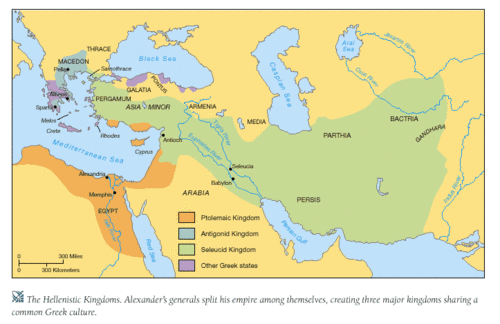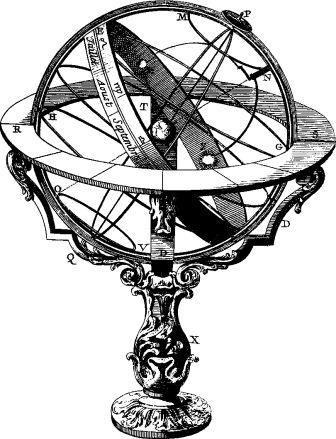Scientific Advances in the Hellenistic Age

The vast size of Alexander’s empire and his encouragement of
scholarship brought many advances in science, mathematics, and medicine.
Cultural diffusion was very much a part of Alexander's empire, and throughout the empire, ideas and theories were exchanged and
improved upon. Examine the map above. The four areas of Alexander's empire that combined to make Hellenistic culture were Greece, Persia, India, and Egypt. After Alexander's death, these areas divided once again and developed ideas separately, but for a brief period, scholarship, culture, and ideas flowed freely among the people. One example of this cultural diffusion is the great research institute and library built in the
Egyptian city of Alexandria. Scholars from all regions converged on the
city to conduct research and discuss their theories with the best minds
of the day. The city became the largest center of learning and
scholarship during the Hellenistic Age, which lasted from the death of
Alexander to about 100 AD.

An
artist’s rendition of the Library of Alexandria (above), which is
estimated to have had up to 700,000 scrolls, including geometry scrolls
written by Euclid.
Medicine reached a new level with the
innovative theory that illnesses occurred by natural and identifiable
causes and were not due to the will of the gods. Patients were observed
to help determine the cause and cure for an illness. Muslim empires improved on this early practice of medicine in later years. The Egyptian astronomer Ptolemy developed a model of his theory of
the geocentric, or Earth-centered, structure of the universe. The
armillary sphere (above) demonstrates his theory, which remained the
accepted model of planetary movement until it was disproved in the 16th
century by Copernicus. In the ancient and medieval worlds, armillary spheres were used
to determine the positions of planets and stars, and for navigating the
seas. One of the innovations of the great Greek mathematician and inventor
Archimedes was the Archimedean screw (above). This machine, using simple ideas of physics,
transferred water from a low level to a higher level. Powered by a
windmill or animal labor, this invention simplified the process of field
irrigation.Not all of the ideas of the Hellenistic Age were about science. Hellenistic philosophers continued to seek the truth about human existence and the world. Alexander created cities with roads on a grid pattern; long streets crossed each other at right angles (unlike the streets of Boston!). International trade flourished along the Mediterranean all the way to the coast of India. Arts and architecture combined Greek, Egyptian, and Indian influences to create realistic works of art.



